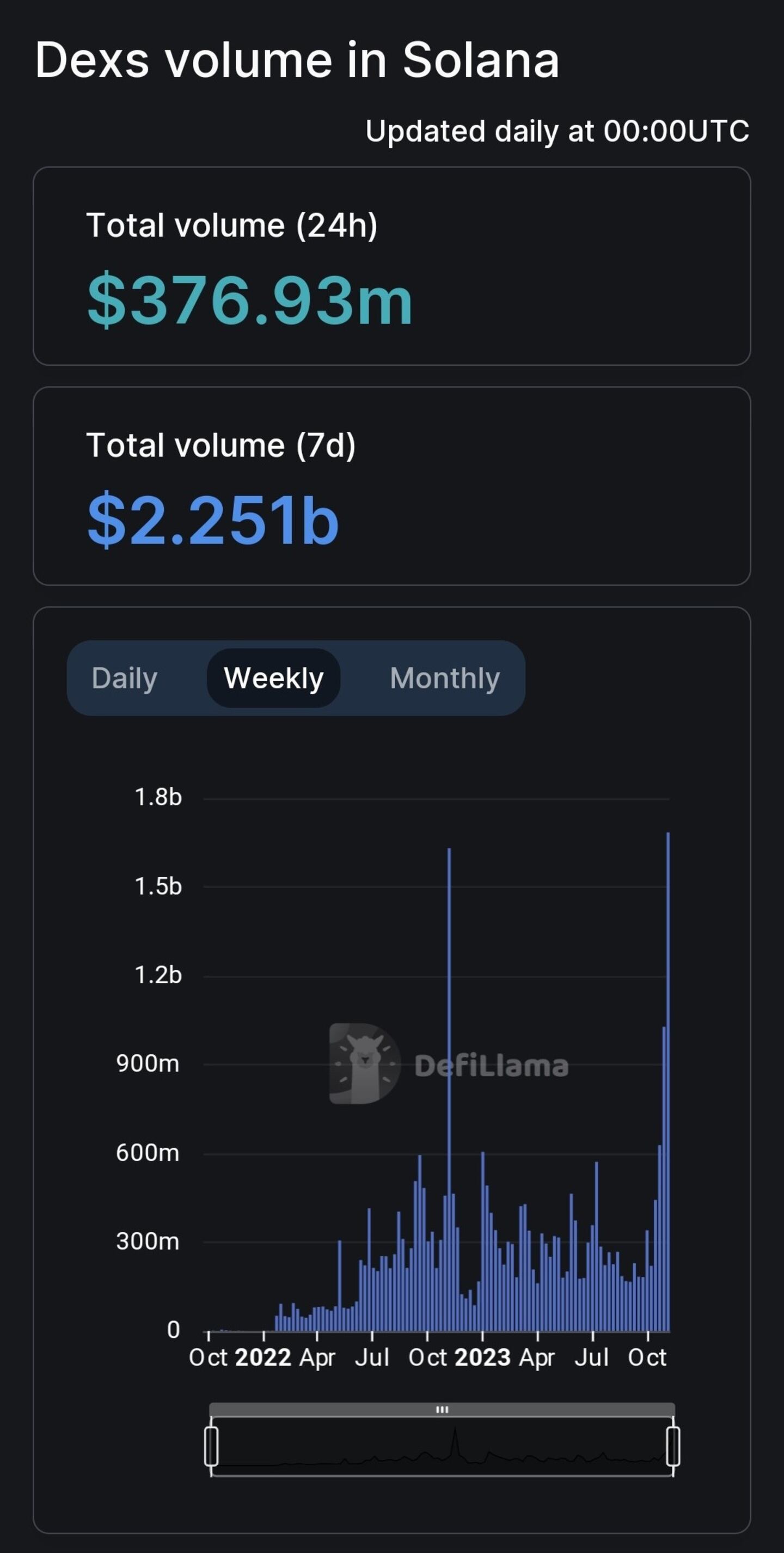A version of this story appeared in our The Decentralised newsletter. Sign up here.
Hey everyone, Tim here.
Welcome back to The Decentralised, bringing you the DeFi news that matters.
Here’s what you’ll find in this week’s edition:
- What is Celestia, and why is it stealing Solana’s thunder
- France wants to audit all DeFi smart contracts — with some worrying implications
- Crypto firms agree on what is staking and what is not
Plus our hand-picked data of the week, top three governance updates, post of the week, and a peek at a developing story we’re keeping an eye on.
Celestia: The new chain on the block
A few weeks ago, we mentioned a Celestia airdrop for Ethereum layer 2 users. Congratulations if you got it when Celestia launched its blockchain on October 31.
Since then, Celestia’s native TIA cryptocurrency has rallied a whopping 147%. Celestia appears to have stolen the limelight from Solana, which, until recently, had been the darling of the DeFi speculators.
So, why is everyone hyped up for Celestia?
Aside from it being a shiny new asset without any bagholders, Celestia focuses on something unique: modularity.
Modular blockchains focus on interconnectivity between different chains, as opposed to the so-called walled garden architecture of previous blockchains like Solana and Avalanche.
According to Celestia, this specialisation in modularity provides breakthroughs in scalability, flexibility, and interoperability.
As Celestia has only just launched, its rally is, like many things in crypto, driven by speculation over what it could be. Still, regardless of whether you’re a trader or in it for the tech, Celestia is one to watch going into 2024.
France wants to regulate DeFi to death
Crypto auditing firms like CertiK or Quantstamp have a difficult enough job trying to make sure DeFi smart contracts are safe, but now French regulators want to give it a shot as well.
However, their idea of what constitutes safe is a little bit different.
As DL News’ regulations reporter Inbar Preiss explored, the French Prudential Supervision and Resolution Authority wants to make it so European DeFi users can only interact with “certified contracts.”
How smart contracts could become certified is unclear. But if the rules are too tight the initiative could have “similar effects to a ban,” Trusted Blockchain Applications board member Mariana de la Roche Wills told DL News.
Crypto lobbying efforts in the EU have helped shape the MiCA regulations which went in effect in June. It’s likely that similar efforts will help educate regulators on the potential negative impact of such regulation and find a compromise.
‘Real’ staking is important for regulation
18 crypto firms and protocols just signalled support for The Proof of Stake Alliance’s guidelines on responsible staking.
The hope among them is that by uniting on best practices, they can give US regulators the clarity needed to rule on the $250 billion crypto staking industry without hindering its growth.
Today we are proud to announce our updated Staking Industry Principles & call on all builders, founders, & technologists in the staking space to align with them to enhance consumer protection, foster responsible innovation, & support the sustainable growth of PoS networks.
— Proof of Stake Alliance (POSA) (@TeamPOSA) November 9, 2023
👇🧵
At its core, the regulatory argument rests on the difference between real and in-name-only staking.
True staking services — those where tokens are used in validation on Proof-of-Stake blockchains — should not be classed as securities, according to Alison Mangiero, executive director of Proof of Stake Alliance.
According to Mangiero, the reason the SEC has previously cracked down on staking services is because some providers co-opted the term staking and used it for simple schemes where holders can lock up tokens to receive more of them.
Ensuring regulators know this difference is important. As Proof-of-Stake is the most popular blockchain validation method, the success of staking is likely necessary for the success of crypto as a whole.
Data of the week
Solana decentralised exchange volume hits a new weekly all-time high of $1.7 billion.
The increased onchain activity is likely in response to Jupiter’s retroactive airdrop announcement. Now users are looking to register activity on other decentralised exchanges in the hopes of qualifying for future airdrops.

This week in DeFi governance
VOTE: Arbitrum delegates vote on new ways to distribute tokens
PROPOSAL: CoW Protocol to test fee models
PROPOSAL: Sushi CEO floats new tokenomics structure
Post of the week
Binance founder and CEO Changpeng “CZ” Zhao gets a llama makeover from DefiLlama’s professional meme artist Vomics.
— strobie reeeee 🍓 莓莓 ストロベリ (container arc) (@0xstrobe) November 12, 2023
What we’re watching
the whole week sol protocols were spamming tvl is up in usd when the gas token is up 600% this year but when you measure tvl in gas tokens, you see a completely different story. https://t.co/qyloj3Y5mZ pic.twitter.com/SUd8oLteOW
— vxH0rny.sol (wholesome arc) (@veH0rny) November 12, 2023
Solana’s recent surge hasn’t benefitted DeFi protocols on the blockchain. As veH0rny points out, measuring deposits in SOL instead of dollars reveals onchain value has actually dropped sharply since the start of October.
Have you joined our Telegram channel yet? Check out our News Feed for the latest breaking stories, community polls, and of course — the memes. https://t.me/dlnewsinfo
Tim Craig is DL News’ Edinburgh-based DeFi Correspondent. Reach out to him with tips at tim@dlnews.com.




